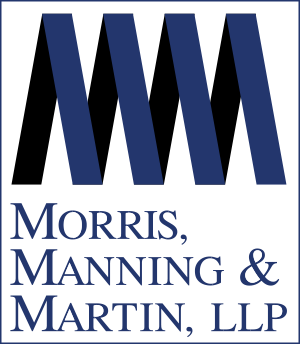The New York Department of Insurance recently concluded its public comment period on the proposed amendments to Regulation 20, Credit for Unauthorized Insurers (Proposed Tenth Amendment to Regulation No. 20 (11 NYCRR 125.); the “Amendment”). The Amendment relaxes the collateral requirement for unauthorized insurers conducting business in New York where the reinsurer meets certain financial criteria. The Amendment is not unlike the Reinsurance Regulation Modernization Model Act proposed by the NAIC in that collateral requirements are based on financial strength and not the licensing or the domicile of the reinsurer.
Under the current regulation, unless a ceding company conducts business with an authorized New York reinsurer, a cedent may only take credit for reinsurance where the reinsurer posts collateral equal to 100 percent of the transferred policyholder claims. Requiring 100 percent collaterization of claims has resulted in alien reinsurers posting approximately to $120 billion in collateral in the U.S. with $500 million per year in related transaction costs.1 The high cost of reinsuring U.S. risks as an alien insurer has resulted in decreased reinsurance capacity for the U.S. market.
The Amendment not only places obligations on the reinsurer it also requires the authorized ceding insurer to account for the financial health of its own reinsurance arrangements. The cedent is required to assess the credit risk and regulatory compliance of each reinsurer in its program through a series of specific criteria outlined in the Amendment (referred to under the Amendment as “Credit Risk Management”, Section 125.1). The Credit Risk Management provisions require the cedent to account for diversification in its program through two separate reporting requirements. The authorized ceding company must report to the Superintendant the following occurrences within thirty days after: 1) reinsurance recoverables from any one reinsurer exceed 50% of its surplus; or 2) the ceding of risk to any single reinsurer which exceeds more than 20% of gross written premium in any calendar year.
The real meat of the Amendment is set forth in the section on alternative credit for cessions to unauthorized reinsurers (Section 125.2(h)). The Amendment permits unauthorized reinsurers in New York to post a sliding scale of collateral based on its credit rating while still permitting the cedent to maintain full reinsurance credit. An unauthorized reinsurer with a triple A rating from two of the specified rating agencies2 (on a stand alone basis separate from its parent or any affiliated entities) is not required to post any collateral. Reinsurers with a double A rating are required to post collateral of 10% of the reinsured liabilities; reinsurers with a single A rating must post 20%; and those with a triple B must post 75% of reinsured liabilities. A reinsurer with less than a triple B rating must still post 100% of the reinsured liabilities as collateral.
Despite the above requirements, nothing in the Amendment prevents the authorized ceding insurer from negotiatingstricter collateral requirements with reinsurers. Additionally, if the ceding insurer becomes subject to an order of receivership or liquidation, the unauthorized reinsurer is required to post collateral equal to 100% of the reinsured liabilities within 30 days of the order. Failure by the reinsurer to post the collateral will result in all members of the reinsurer’s holding company system failing to meet the standards necessary to permit ceding insurers to qualify for reinsurance credit (unless the Superintendent deems it to be in the public interest to allow the credit in whole or in part).
In addition to the financial rating requirements, unauthorized reinsurers, whether U.S. based or foreign, must meet certain regulatory obligations. First, the cedent must verify that the reinsurer 1) meets the standards of solvency and capital adequacy established by its domiciliary regulator, 2) is authorized by its domicile to assume the types of reinsurance ceded, and 3) maintains surplus in excess of $250,000,000.
Additional regulatory requirements are imposed on alien or non-U.S. reinsurers: 1) The New York Department and the domestic regulator must have signed a memorandum of understanding addressing issues deemed relevant by the Superintendant and 2) the reinsurer’s domestic regulator must provide reciprocal access to U.S. reinsurers.
The Amendment specifies certain contractual obligations as well. The reinsurance agreement must require that the unauthorized reinsurer notify the cedent within 30 days of any changes to its domicile or its rating status. The reinsurance agreement must also include an insolvency provision in compliance with New York insurance law, a provision designating an agent for service of process in New York and a provision designating choice of law as New York.
The Amendment also mandates that reinsurance contracts require all disputes to be subject to U.S. jurisdiction. The language was written, however, to state that all disputes would be subject to the jurisdiction of the U.S. Courts which, would eliminate the parties’ ability to resolve disputes through arbitration. As those in the reinsurance arena are well aware, the great majority of reinsurance contacts require that disputes be settled through binding arbitration. The New York Department has informally stated that the language will be amended to include the ability to arbitrate disputes.
The New York Department is still considering comments received on the proposed Amendment. The original effective date for the Amendment was planned as July 1, 2009, however the Department may delay the effective date in order to synchronize the timing of the Amendment with the NAIC’s Reinsurance Modernization Model Act.
Stacey D. Kalberman is Of Counsel in the firm’s Insurance and Reinsurance Practice. Stacey concentrates her practice in regulatory matters for alternative risk programs, including insurance captives, risk retention and purchasing groups. Stacey received her bachelor’s degree from George Washington University and her law degree from Emory University School of Law.
1Regulatory Impact Statement for the Tenth Amendment to 11 NYCRR 125 (Regulation 20).
2The rating agencies specified in the Amendment are S&P, Moody’s, Fitch, Best and any other rating agency recognized by the SVO.

